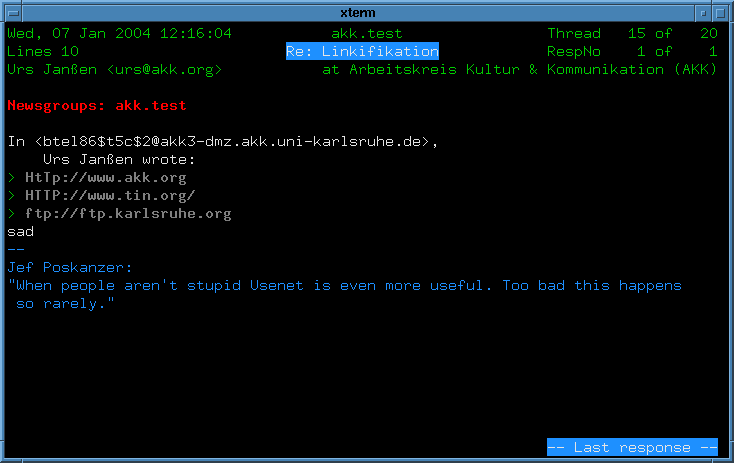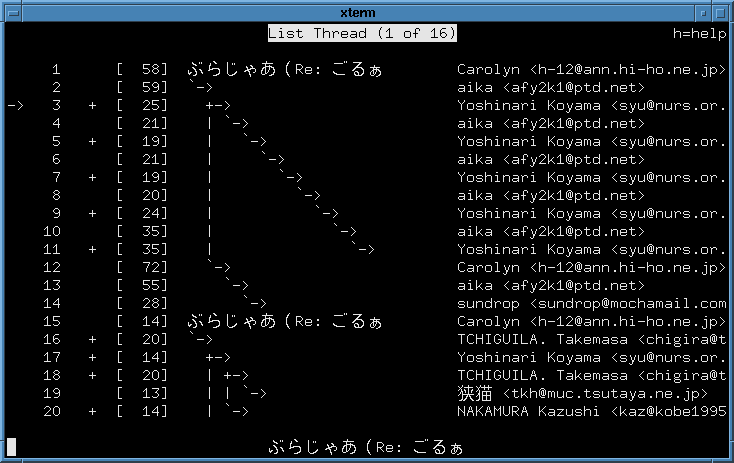How I Conceive of Mastodon
- 7 minutes read - 1308 wordsAfter Twitter went private, I found that management did a number of things to the corporate culture and to the content of the site such that I no longer wanted to use it. Around December 1st, I quit Twitter and did the big account delete. Since then, though, I have had the great pleasure to discover Mastodon!

My home feed for Mastodon
So far it’s great. I’m finding the quality of discourse and the community there to be really special. It’s less commercial and more intellectual. Unfortunately, given the drama and money surrounding Twitter, Mastodon keeps getting compared to it. While Mastodon is while it’s superficially quite similar to Twitter, I’d argue it’s something else, even something better. Namely, it:
- Reminds me of early-90s USENET before the eternal September: an open, engaging, friendly group of communities full of amateurs and professionals sharing insights about things they love, from the X-Files to 15thth century lullabies. I’ve joined Latin translators, fans of old Anglo-Saxon languages (Middle-Dutch, Middle-English, Frankish), programmers, instructors, SF tech scene folks, and the creator of one of the Greatest Video Games of All Time
- There’s also a decentralized, DIY, localized-but-connected aspect to Mastodon that recalls bulletin board systems with forum replication in the pre-WWW era e.g fidonet
In my opinion, these design influences, not shared by Twitter, make Mastodon something better and something worth exploring.
In a subsequent post, I’ll explain my technical setup that makes keeping up on Mastodon a breeze, given you think about it along these two major axes. However, in this post I’d just like to talk about the technology, approach, and culture of Mastodon and what I like about it.
Here’s my thesis:
Mastodon is the unification of the BBS culture of the pre-WWW era combined with the intelligence and specialization of Usenet forums (“newsgroups”).
If you’re unfamiliar with these ideas, read on!
Mastodon has a USENET-inspired Design
In the 90s, your internet service provider (ISP) – then typically a Unix machine that you used a phone line and a modem to dial into to get a plain old terminal – could offer a product called “Network News” or access to the USENET article publication system. You could think of it as web forums before the web existed – they were strictly text-based!
USENET carried many, many “forums” or, “newsgroups,” in the parlance. Not all of them were, frankly, fit for human consumption. Accordingly, many ISPs would filter our / drop / ban certain lists.1 Thus, within the subset of available newsgroups carried by your host node, you would choose which newsgroups to subscribe to. This point comes back when talking about Mastodon.
You would subscribe to the various newsgroups using an application called a
“News Reader.” There were many. My favorite news reader was tin.
In any case, my subscription list, as I remember it, had
comp.programming.cplusplus for programming or alt.fans.xfiles and
alt.music.alternative for fandom.

Here’s a single message view in my preferred reader, tin
It’s worth noting that news readers really pioneered the “threaded message” view now that we take for granted in so many mail readers.

Note the ’thread’ using primitive arrows and indentation to show that these are all replies on a single topic
Usenet Ideas That Carry Into Mastodon
- You will pick a home node that has a culture. Your node will have a culture associated with it (“information security researchers,” “biological research,” “tech people in their off hours,” “just social folks”)
- You will subscribe to content areas. In Mastodon, the closest analog to
a newsgroup is a hashtag e.g.
#linguisticsor#sfbaor#nyc - People are also “newsgroups.” This marks a real evolution from Usenet and an idea from the 2000s. Some individuals are producers of content that you associate with them and you want to follow what they post. In the USENET era, this was not a thing2 . However in the social media / Twitter era it is very much a thing. Mastodon integrates this idea that creators might be channels of content
- Mastodon content in most reading applications looks like Twitter’s infinite scroll or “river.” I personally consider this a flaw/missed opportunity and will discuss it at length below
- Your feed will only show content you subscribed to. After subscribing to people or hashtags, you will only ever see content from people you subscribed to or that they “boosted” (à la “retweet”). Critically there is no algorithm to guess and refer content to you or to target ads at you
- Your feed is a poor time-killer. Due to Twitter’s financial motive to keep your eyeballs on-site (ad exposure) they did many gyrations to make sure there was always something new and fresh. This could kill tons of time. Alternatively, if one used Twitter as a break when cognitively burdened (“Hm, this code is frustrating. What’s on Twitter?”), Mastodon is a poor substitute. This is probably a good thing.
BBS Ideas That Carry Into Mastodon
While many of the models of Mastodon parallel early Internet technology like USENET, it also has a scrappy, cheap, DIY ethos that recalls bulletin board systems (BBS) of the phones-and-modems era. BBSs were computers running software that allowed a user to dial in on a phone line, contact a computer’s modem, and then use the bulletin board software running on the remote machine to participate in various community activities: post in forums, post on BBS-local private mail, read about events, set up for sale transactions, etc.
Mastodon, since it doesn’t have ads paying for hardware and network bills, has a culture of benevolent volunteerism like with BBS. There’s an actual human who is donating time, hardware, and bandwidth to create the playscape users are enjoying. They serve as a guardian for standards of behavior. Critically, they also have the ability to ban those who act against the ethos of the host node. In Mastodon, your entry to the federated system is dependent on someone running a node and refereeing behavior in that system.
Also, it was common in the BBS era for BBS’ to federate i.e. use some replication algorithm to make certain locally-held forums replicate so that modem users could dial into a local node at local phone rates instead of dialing long distance. As such, these BBS’ federated forums were both local, while also being transnational or even international. Mastodon has a similar notion, the “Fediverse,” the aggregate of available Mastodon content, that is created by nodes participating in a replication architecture.
So that’s how I urge you to think of Mastodon’s purpose and goals.
Mastodon in Practice
The default interface for consuming Mastodon posts (web client) looks a lot like Twitter or Facebook with a “river” or “scroll.” Nearby, one posts content: messages, links, pictures, polls. If one wants to share what a contact posted, it can be “reboosted.” Quote-boosting is not presently supported. If you want to send a lightweight “I liked this,” favorite a post. Since content is stored at various nodes across the Fediverse, search is a bit more fraught. To make a post searchable or part of a subscribed hashtag, be sure to include relevant hashtag(s) in your post.
Conclusion
I’m so excited about the communities that I’m finding at Mastodon, if social media is something you want – and that’s a choice worth consciously making – Mastodon is like the PBS of social media and lets you leave the ad-supported rage bait behind. It’s been an experience that I’d call “Twitter, but with an extra 50 IQ points.”
If you’re curious about how I’m optimizing my Mastodon usage, read my next post.
Footnotes
- It was worth nothing that your host node could choose not to
carry certain newsgroups. Often host nodes filtered images with a
xxxin the name i.e. featuring adult content. - This is a simplification and a lie. Some USENET identities built a certain fandom around themselves like kibo.